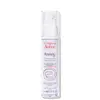What's inside
What's inside
 Key Ingredients
Key Ingredients

 Benefits
Benefits

 Concerns
Concerns

 Ingredients Side-by-side
Ingredients Side-by-side

Water
Skin ConditioningTriethylhexanoin
MaskingCyclopentasiloxane
EmollientCetearyl Alcohol
EmollientCyclohexasiloxane
EmollientCeteareth-20
CleansingPolymethyl Methacrylate
Ceteareth-33
CleansingCaprylic/Capric Triglyceride
MaskingAmmonium Acryloyldimethyltaurate/Vp Copolymer
Oenothera Biennis Oil
EmollientPhenoxyethanol
PreservativeBenzoic Acid
MaskingDisodium EDTA
Retinal
Skin ConditioningTocopheryl Glucoside
EmollientOleoyl Dipeptide-15
Skin ConditioningMica
Cosmetic ColorantSodium Hydroxide
BufferingSilica
AbrasiveBHT
AntioxidantOleoyl Tetrapeptide-31
AntioxidantTocopherol
AntioxidantTitanium Dioxide
Cosmetic ColorantCaramel
Cosmetic ColorantCI 17200
Cosmetic ColorantWater, Triethylhexanoin, Cyclopentasiloxane, Cetearyl Alcohol, Cyclohexasiloxane, Ceteareth-20, Polymethyl Methacrylate, Ceteareth-33, Caprylic/Capric Triglyceride, Ammonium Acryloyldimethyltaurate/Vp Copolymer, Oenothera Biennis Oil, Phenoxyethanol, Benzoic Acid, Disodium EDTA, Retinal, Tocopheryl Glucoside, Oleoyl Dipeptide-15, Mica, Sodium Hydroxide, Silica, BHT, Oleoyl Tetrapeptide-31, Tocopherol, Titanium Dioxide, Caramel, CI 17200
Water
Skin ConditioningDimethicone
EmollientGlycerin
HumectantButylene Glycol
HumectantIsononyl Isononanoate
EmollientCastor Isostearate Succinate
Skin ConditioningGlyceryl Stearate
EmollientC12-15 Alkyl Benzoate
AntimicrobialDimethicone Crosspolymer
Emulsion StabilisingPEG-33
HumectantPolysorbate 20
EmulsifyingBehenyl Alcohol
EmollientPEG-100 Stearate
Pentaerythrityl Tetraisostearate
EmollientPolymethylsilsesquioxane
Tetrahexyldecyl Ascorbate
AntioxidantRetinol
Skin ConditioningCeramide Ng
Skin ConditioningPalmitoyl Tetrapeptide-7
Skin ConditioningPalmitoyl Hexapeptide-12
Skin ConditioningSodium Hyaluronate
HumectantDipotassium Glycyrrhizate
HumectantGlycyrrhiza Glabra Root Extract
BleachingAvena Sativa Kernel Extract
AbrasiveArctium Lappa Seed Oil
EmollientSalix Alba Extract
Skin ConditioningGlycine Soja Sterols
EmollientLecithin
EmollientAllantoin
Skin ConditioningTocopheryl Acetate
AntioxidantHydrolyzed Soy Protein
HumectantSorbitan Laurate
EmulsifyingAcetyl Dipeptide-1 Cetyl Ester
Skin ConditioningDisodium EDTA
Hydroxyethylcellulose
Emulsion StabilisingPalmitoyl Tripeptide-1
Skin ConditioningSodium Hydroxide
BufferingTribehenin
EmollientCaprylyl Glycol
EmollientEthylhexylglycerin
Skin ConditioningPentylene Glycol
Skin ConditioningPEG-75 Shea Butter Glycerides
EmulsifyingPPG-12/Smdi Copolymer
EmollientPEG-10 Phytosterol
EmulsifyingPEG-8 Dimethicone
EmulsifyingPEG-14
HumectantMagnesium Aluminum Silicate
AbsorbentArachidyl Glucoside
EmulsifyingArachidyl Alcohol
EmollientSclerotium Gum
Emulsion StabilisingCarbomer
Emulsion StabilisingPhenoxyethanol
PreservativeBenzoic Acid
MaskingWater, Dimethicone, Glycerin, Butylene Glycol, Isononyl Isononanoate, Castor Isostearate Succinate, Glyceryl Stearate, C12-15 Alkyl Benzoate, Dimethicone Crosspolymer, PEG-33, Polysorbate 20, Behenyl Alcohol, PEG-100 Stearate, Pentaerythrityl Tetraisostearate, Polymethylsilsesquioxane, Tetrahexyldecyl Ascorbate, Retinol, Ceramide Ng, Palmitoyl Tetrapeptide-7, Palmitoyl Hexapeptide-12, Sodium Hyaluronate, Dipotassium Glycyrrhizate, Glycyrrhiza Glabra Root Extract, Avena Sativa Kernel Extract, Arctium Lappa Seed Oil, Salix Alba Extract, Glycine Soja Sterols, Lecithin, Allantoin, Tocopheryl Acetate, Hydrolyzed Soy Protein, Sorbitan Laurate, Acetyl Dipeptide-1 Cetyl Ester, Disodium EDTA, Hydroxyethylcellulose, Palmitoyl Tripeptide-1, Sodium Hydroxide, Tribehenin, Caprylyl Glycol, Ethylhexylglycerin, Pentylene Glycol, PEG-75 Shea Butter Glycerides, PPG-12/Smdi Copolymer, PEG-10 Phytosterol, PEG-8 Dimethicone, PEG-14, Magnesium Aluminum Silicate, Arachidyl Glucoside, Arachidyl Alcohol, Sclerotium Gum, Carbomer, Phenoxyethanol, Benzoic Acid
 Reviews
Reviews

Alternatives
Ingredients Explained
These ingredients are found in both products.
Ingredients higher up in an ingredient list are typically present in a larger amount.
Benzoic Acid is used to preserve and adjust the pH of products.
The antimicrobial property of Benzoic Acid helps elongate a product's shelf life. Its main role is to reduce fungi growth and is not found to be effective at fighting bacteria. Therefore Benzoic Acid is always added along with other preservatives.
In its pure form, Benzoic Acid looks like a white crystalline solid. It has slight solubility in water.
The name of Benzoic Acid comes from gum benzoin, which used to be the sole source of deriving this ingredient. Benzoic Acid is the most simple aromatic carboxylic acid.
Benzoic Acid is naturally occuring in strawberries, mustard, cinnamon, and cloves. It has a slight scent but is not considered to be a fragrance.
Learn more about Benzoic AcidDisodium EDTA plays a role in making products more stable by aiding other preservatives.
It is a chelating agent, meaning it neutralizes metal ions that may be found in a product.
Disodium EDTA is a salt of edetic acid and is found to be safe in cosmetic ingredients.
Learn more about Disodium EDTAPhenoxyethanol is a preservative that has germicide, antimicrobial, and aromatic properties. Studies show that phenoxyethanol can prevent microbial growth. By itself, it has a scent that is similar to that of a rose.
It's often used in formulations along with Caprylyl Glycol to preserve the shelf life of products.
Sodium Hydroxide is also known as lye or caustic soda. It is used to adjust the pH of products; many ingredients require a specific pH to be effective.
In small amounts, sodium hydroxide is considered safe to use. However, large amounts may cause chemical burns due to its high alkaline.
Your skin has a natural pH and acid mantle. This acid mantle helps prevent harmful bacteria from breaking through. The acid mantle also helps keep your skin hydrated.
"Alkaline" refers to a high pH level. A low pH level would be considered acidic.
Learn more about Sodium HydroxideWater. It's the most common cosmetic ingredient of all. You'll usually see it at the top of ingredient lists, meaning that it makes up the largest part of the product.
So why is it so popular? Water most often acts as a solvent - this means that it helps dissolve other ingredients into the formulation.
You'll also recognize water as that liquid we all need to stay alive. If you see this, drink a glass of water. Stay hydrated!
Learn more about Water